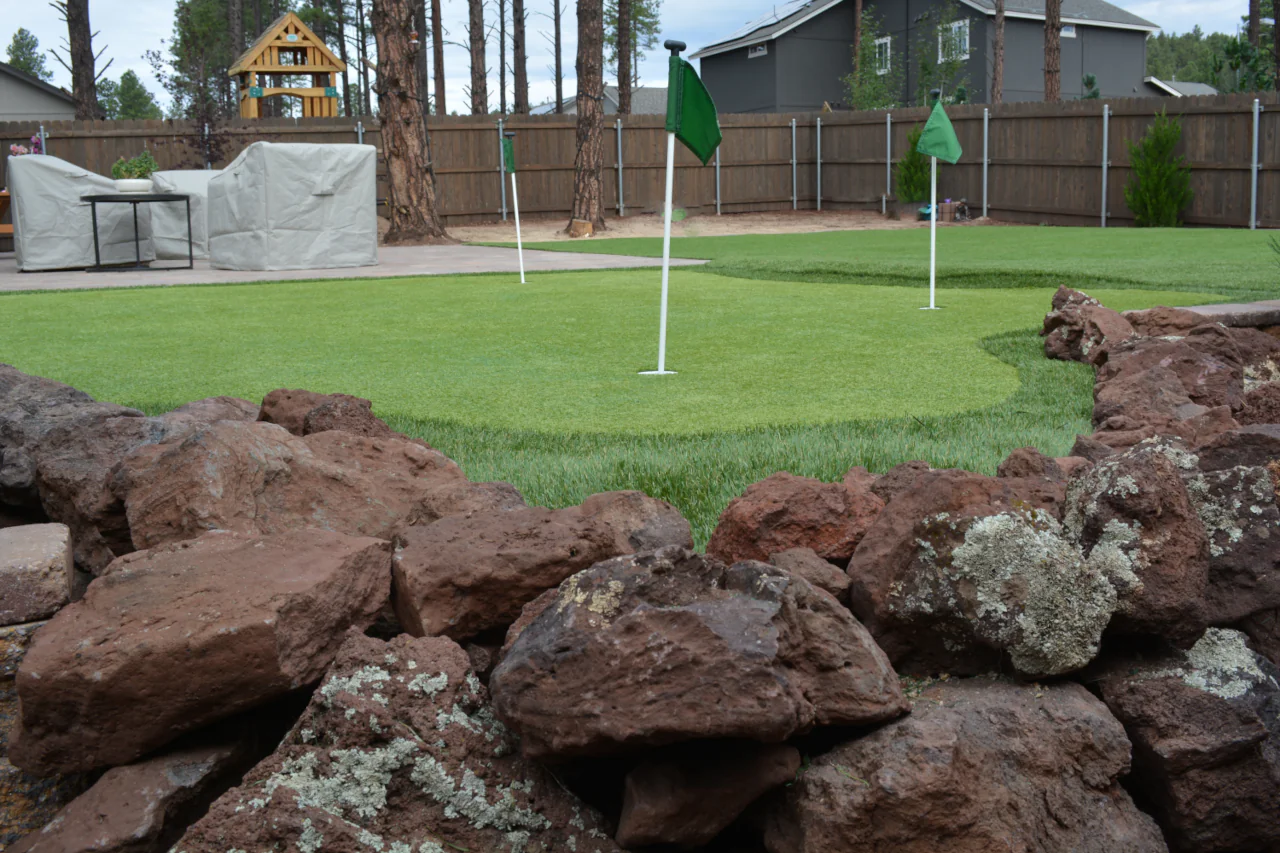How to Design a Three-Hole Practice Green

A three-hole practice green gives you a simple, enjoyable way to sharpen your short game without consuming all your outdoor space. This guide explains a well-designed layout, easy pin placement ideas, which synthetic turf types work best for a backyard putting green setup, and quick, repeatable drills. Sprinkle in a little creativity and a consistent practice routine, and you’ll be developing smoother, more confident strokes in no time.
SIZE, SHAPE, AND HOW IT FITS THE YARD
Start by finding a flat or softly sloping spot that doesn’t disrupt common-use areas. A typical three-hole green can require 300–700 square feet, depending on how much spacing you want between the holes. Think of three zones that create engaging angles: a straightforward short putt, a medium putt with gentle slope, and a challenging long-break putt.
If you choose a full synthetic grass installation, pick a spot with good sun exposure and consider how the water will drain there. Proper base work keeps the surface smooth and helps the turf perform like a real putting surface. If you’re short on space, stagger the holes so each one feels different without needing much extra material.
LAYOUT TIPS FOR BETTER PRACTICE
Vary distances: aim for one close putt (6–10 ft.), one medium (12–18 ft.), and one long-range hole (20–35 ft.). That range necessitates different putting speeds and focus.
Use subtle contours: small elevations or gentle dips add variety without requiring major grading.
Create approach area options: include a small chipping area beside one hole so you can practice pitch-and-putt sequences.
Edge details: a low-profile roll-up edge or sand trap adds style and gameplay challenges.
Throughout the layout process, mention your installation preference — whether you want a full synthetic turf base or a hybrid renovation — because turf varieties act differently depending on prep work.
PIN PLACEMENT IDEAS FOR VARIETY
Change pin locations regularly. Move pins forward, back, and to the sides to create different break patterns. A simple system: A-B-C rotation where A = front, B = middle, C = back-third. For extra challenge, place a temporary pin on the side of a gentle slope to strengthen break and pace judgment.
Use removable cups or portable pin kits so you can change locations without damaging the turf. Changing pins on synthetic turf putting greens is simple and lets you mimic tournament variety in a San Francisco backyard setting.
SHORT PRACTICE ROUTINES FOR BUSY LIVES
No need for long practice blocks. Try three compact drills that fit the three-hole layout:
Speed Ladder (6–12 minutes): Start at the short hole and putt three balls from each range—short, mid, long—focusing on a consistent stroke length for each distance.
Break Read Drill (8–12 minutes): From a single starting point, putt to each of the three holes with the pin in a different spot. Work on analyzing contours and adjusting pace.
Pressure Finish (5–8 minutes): Make two-putt cycles around the three holes. If you finish all three in two putts, reward yourself with a harder approach next round.
Short routines like these keep progress steady and make practice easy to maintain. Mix them over several days for well-rounded improvement.
